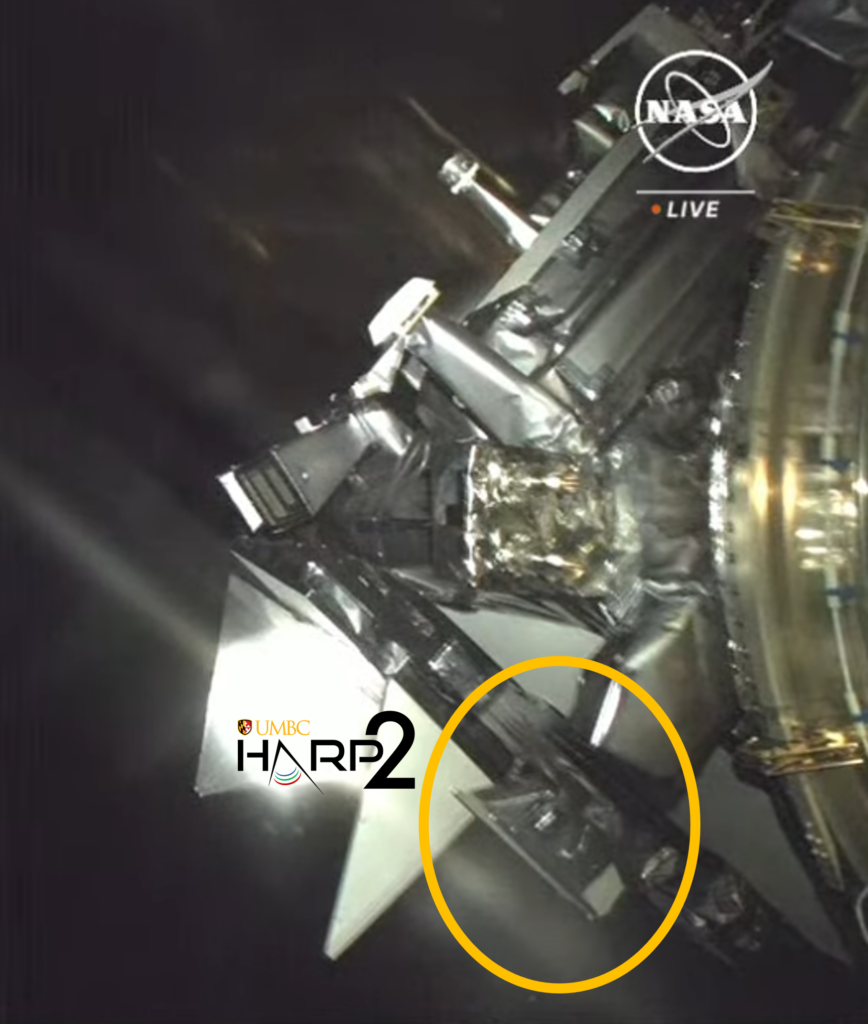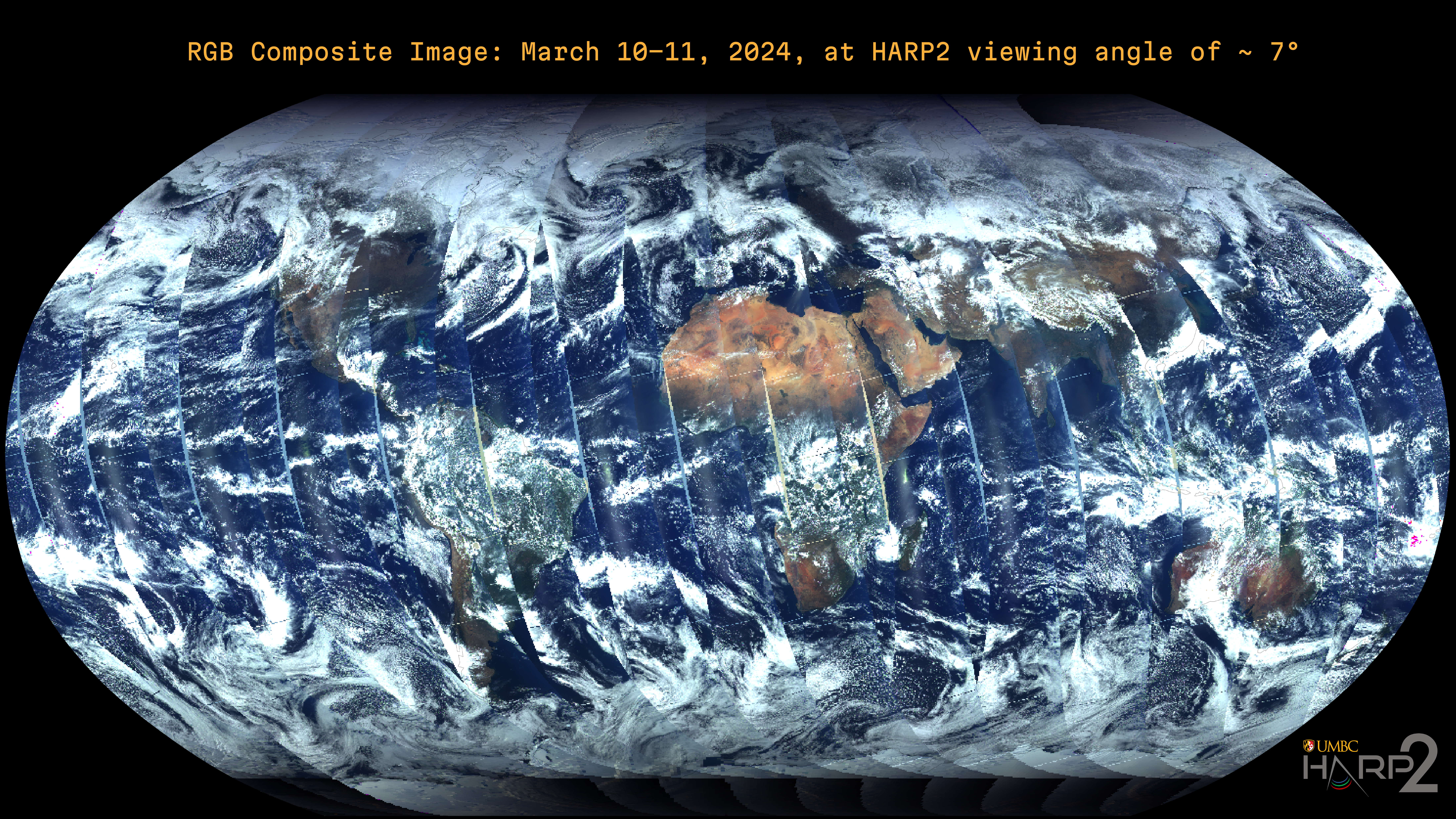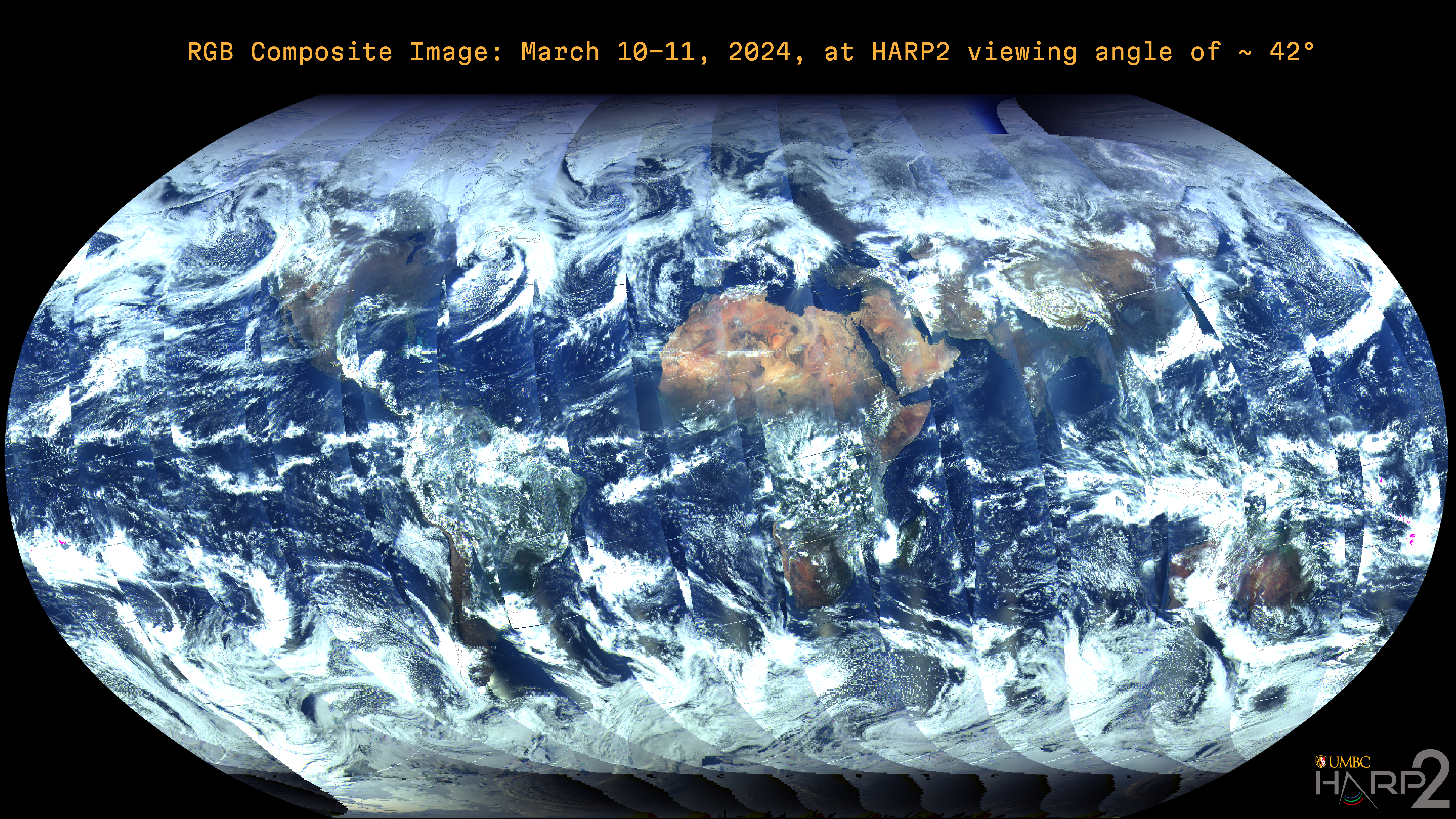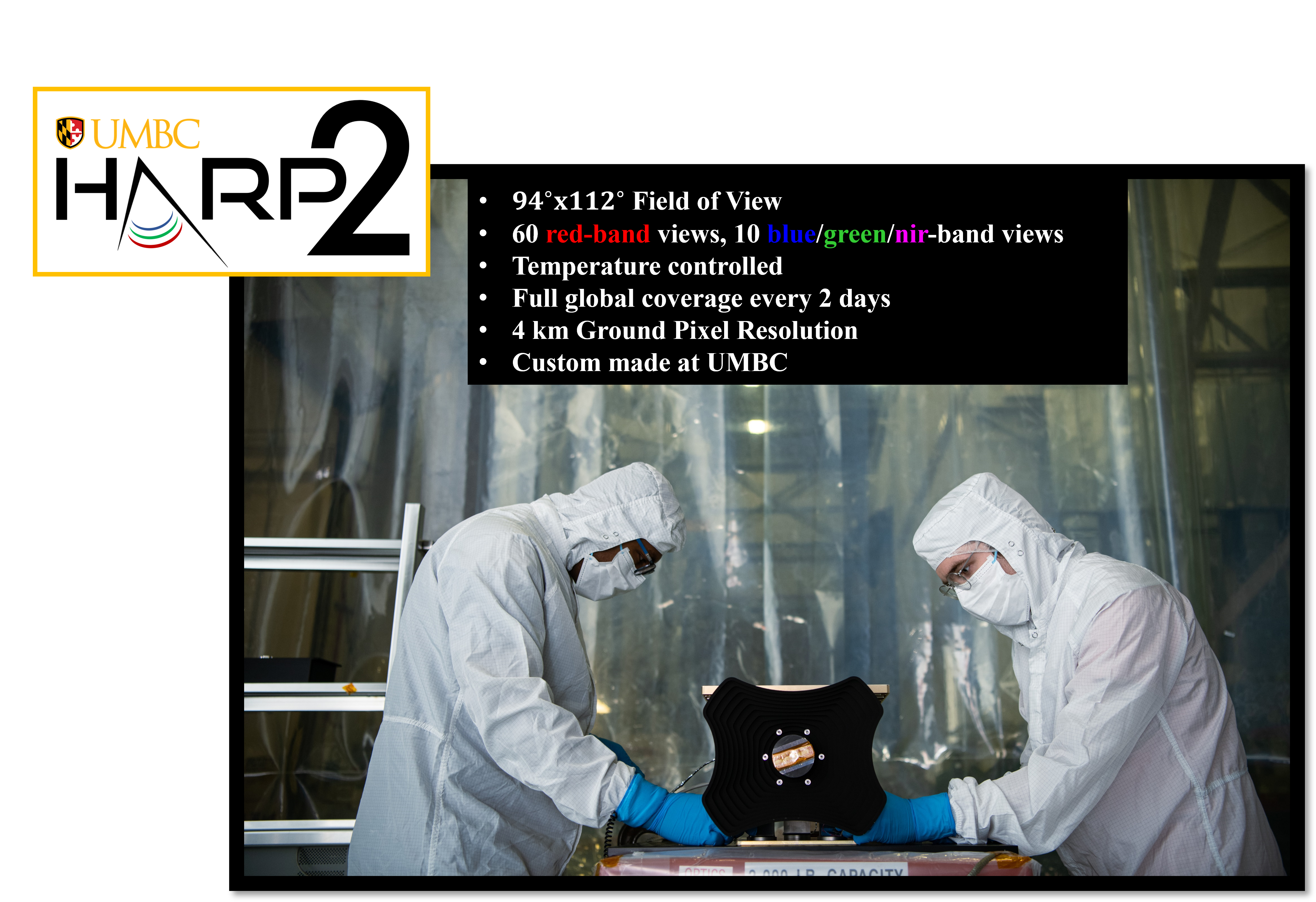HARP2 is a wide field-of-view pushbroom polarimeter with four spectral channels blue (440 nm), green (550 nm), red (665 nm), and near-infrared/NIR (865 nm) measuring the linear Stokes Parameters
Using a “division of amplitude” technique, HARP2 simultaneously captures images in 3 states of polarization. Its image array is divided into spectral “view sectors” which designate up to 60 view angles HARP2 uses to view the Earth.

See HARP2 during the PACE launch by NASA!

HARP2 Global Map (Nadir View)

HARP2 Global Map (Backward View)


